Brown, the color of earth, is a reassuringly warm color, associated with nurturing and the growth of life. For those who follow a Feng Shui approach to life, brown symbolizes food, nature, the continual cycle of life.
Tan is a pale hue of brown, originally derived from tannum, or oak bark, used in the tanning of leather. Roses, cymbidiums, and chrysanthemums can be found in hues of tan. There are tan colored annuals and perennials that provide depth to floral arrangements, patios, indoor arrangements and outdoor gardens.
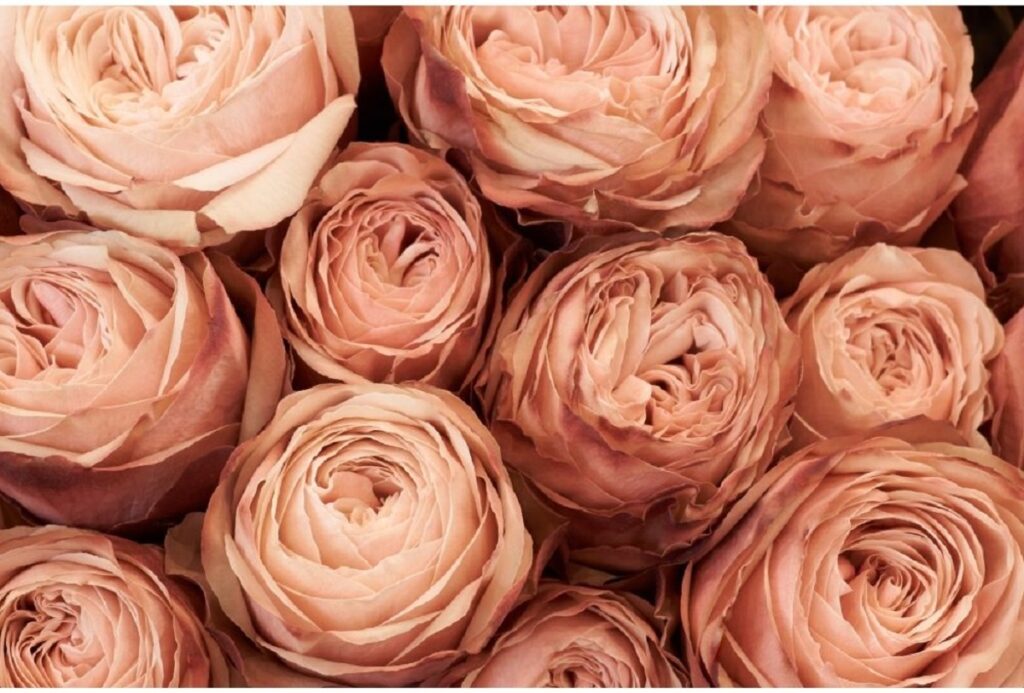
There are tan flowers for small plantings and large plantings and for naturalized landscapes and fields.
Let’s have a look at some tan blooms so you can get a feel for whether these hues appeal and would work well for your garden, patio, floral arrangement, centerpiece or whatever you have in mind.
1. Downtown Brown Tall Bearded Iris
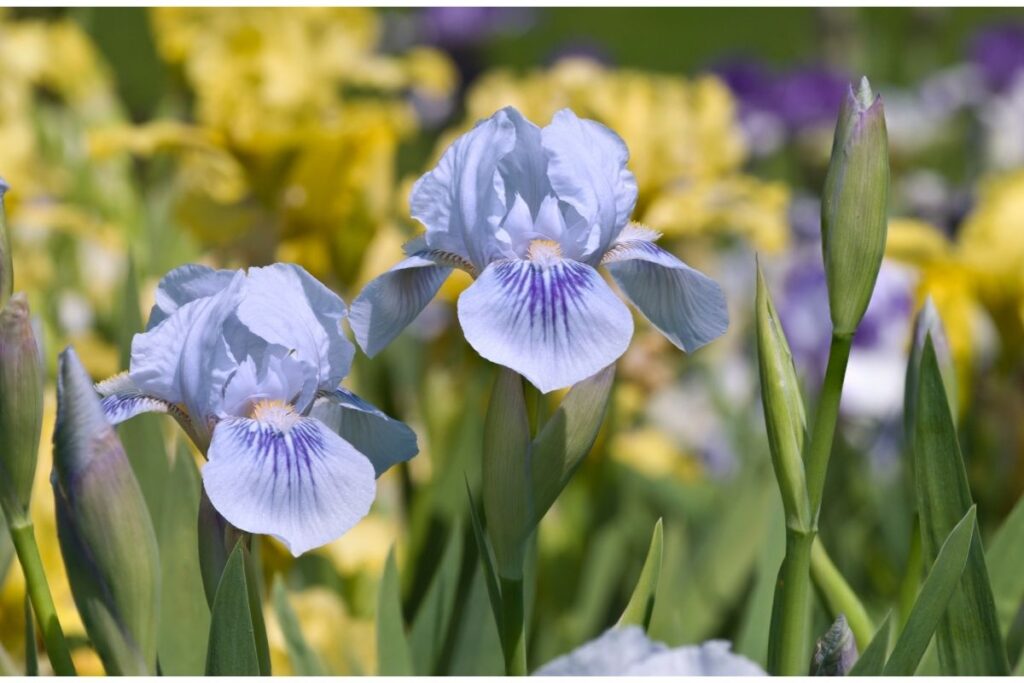
This beautiful Iris has copper brown and purple hues and is simply stunning. The Iris design of ruffles and layers works magnificently with the hues to create a dreamy bloom anyone would love.
2. Rosa Charlie Brown
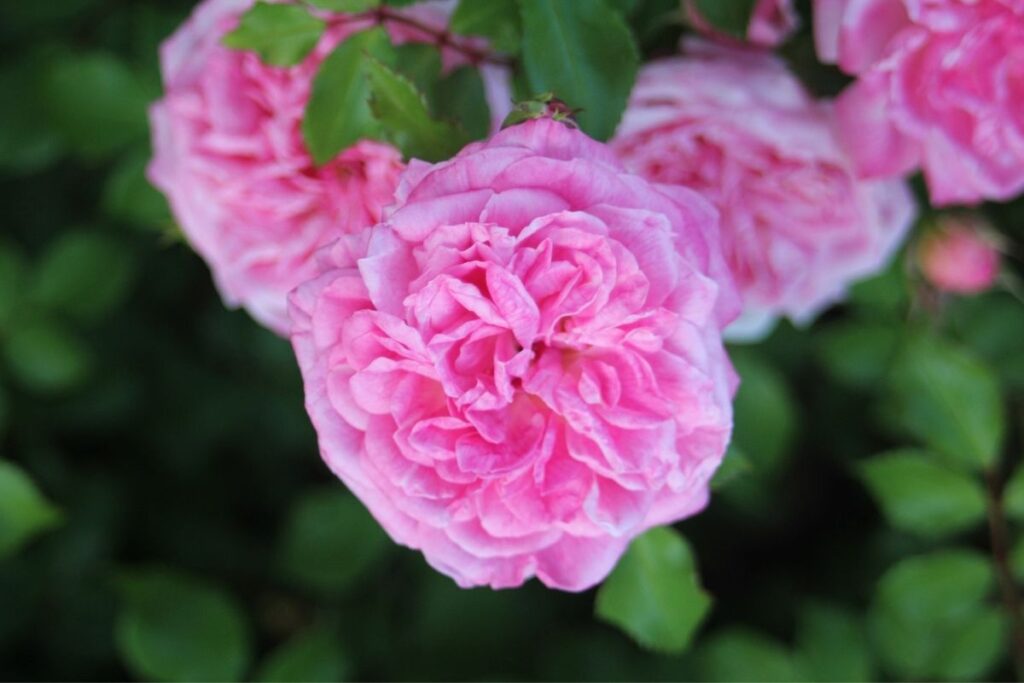
A North American rose, these miniature roses come in a variety of colors, including this pale tan brown. There are around eight to fifteen petals on each bloom and the plant blooms abundantly.
3. Cattleya Velutina Orchid
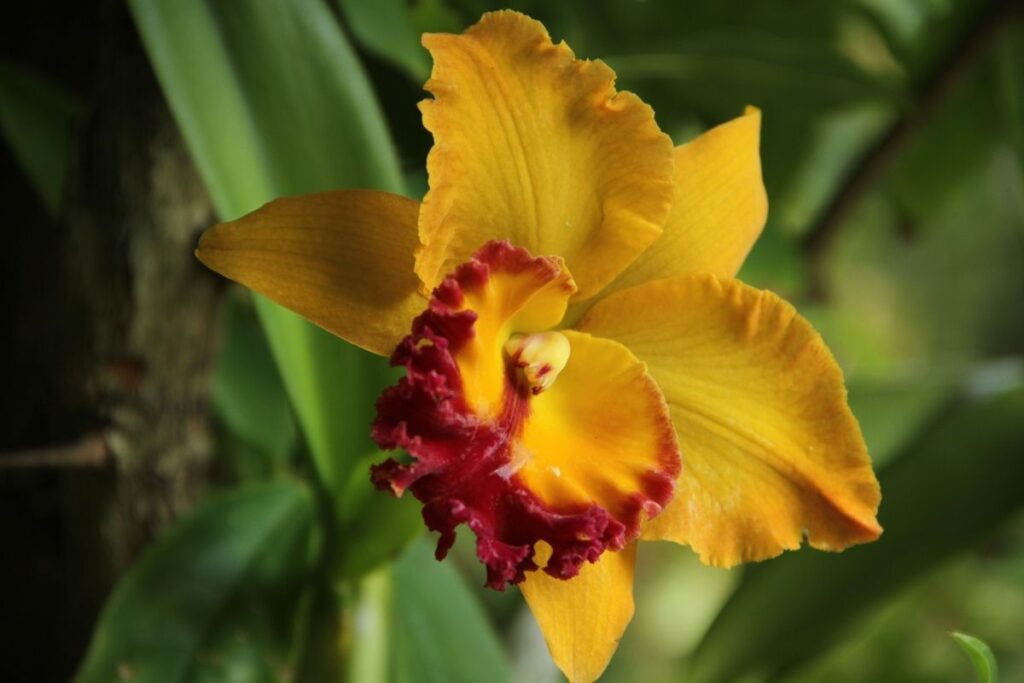
This rare Brazilian species of Orchid has a gorgeous array of colors to it. The petals are brownish bronze with deep red or burgundy spots around a white lip. There are also purple stripes and a golden throat. Imagine finding one of these beauties growing in the wild! Not only are they stunning, they emit a lovely fragrance too.
4. Toffee Rose
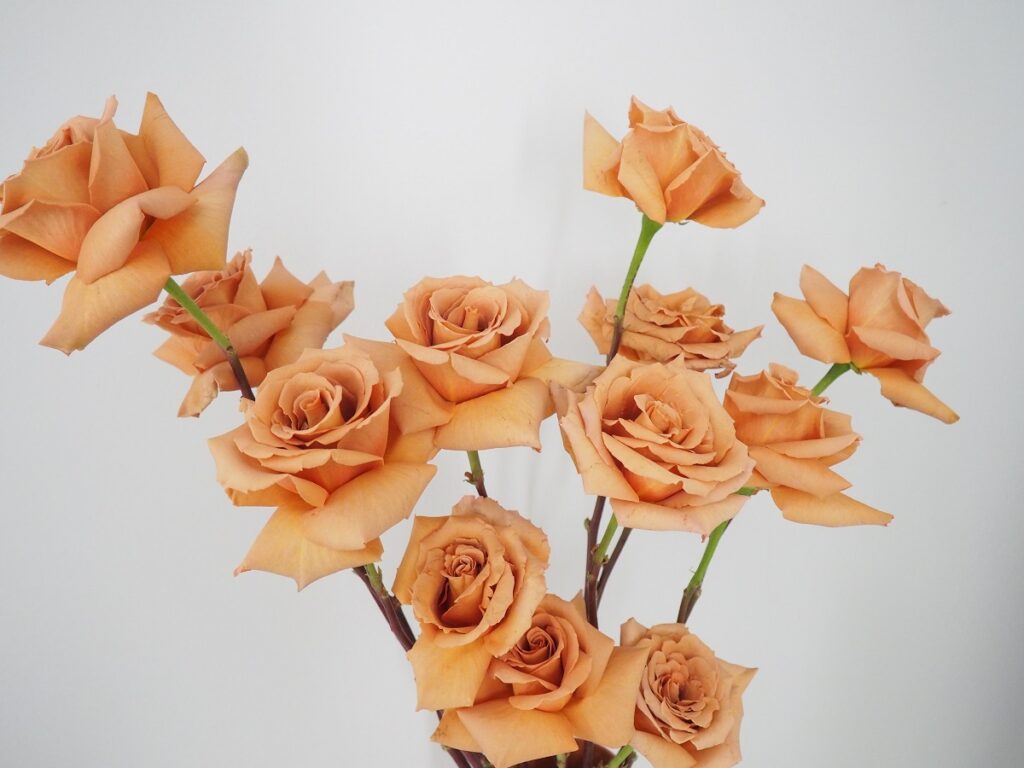
With a name like Toffee Rose, there’s double the reason to love these blooms. They’re roses and they’re named after toffee! The tones of this Rose add depth to floral arrangements and gardens.
RELATED: Brown Trees: Everything You Need To Know About Them
5. Sepia Brownie Carnation
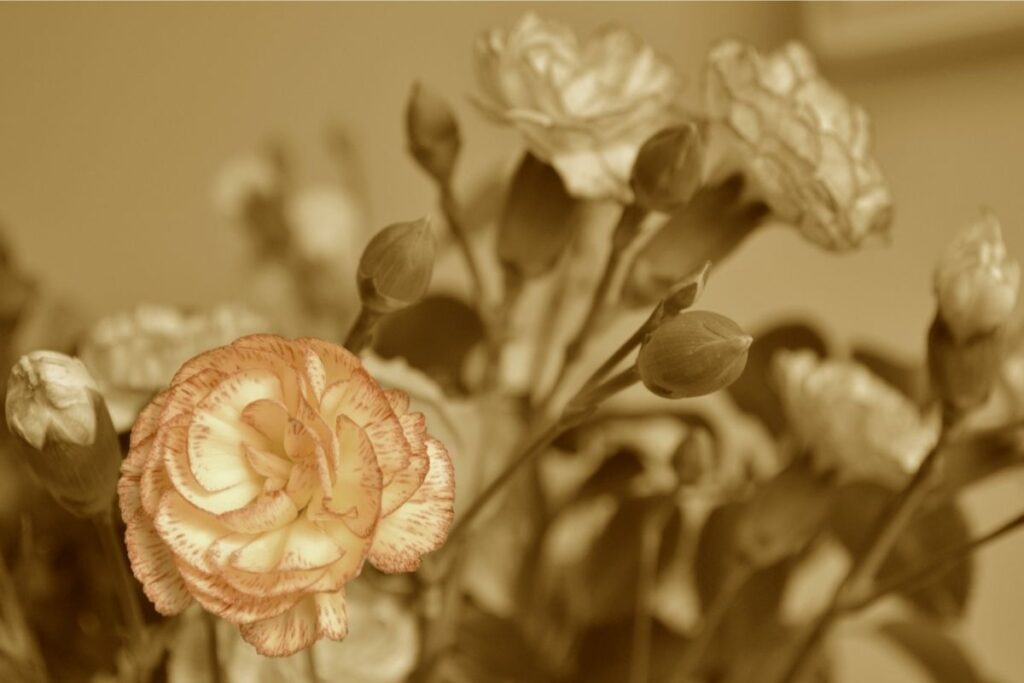
These elegant blooms have cabbage-shaped heads, which allow a multitude of petals to emerge. The overall effect has unique textures with swirls and ruffles.
6. Charlie Brown Cymbidium
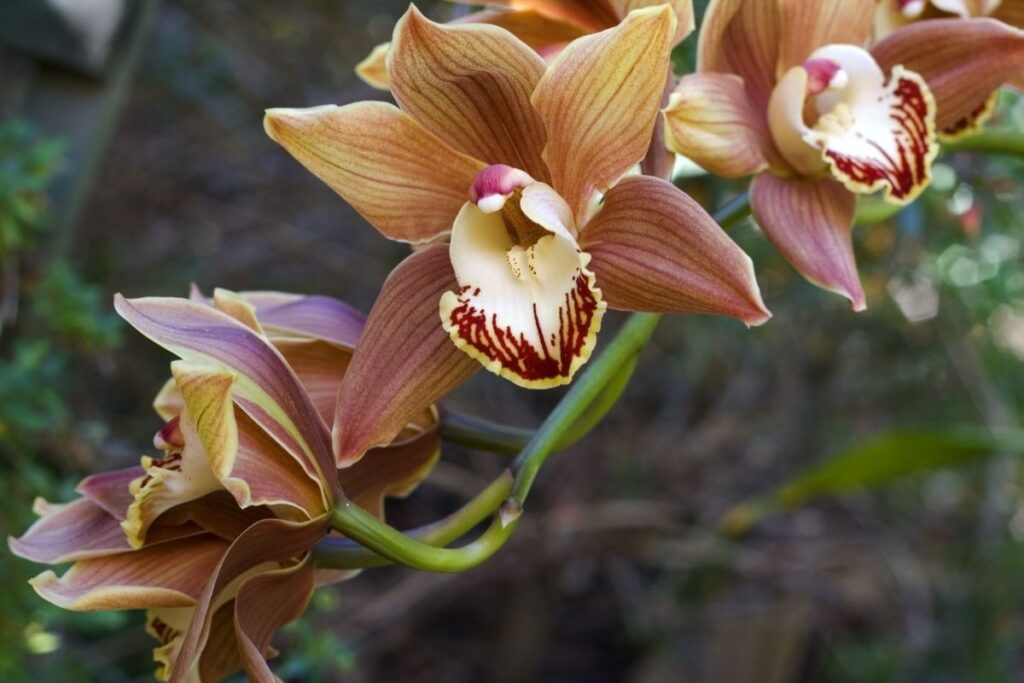
This stunning Cymbidium comes from the Himalayas. Its genus has 52 species of evergreen orchids. Charlie Brown Cymbidiums have fall hues with brown tones and notes of yellow and peach. The deep crimson throat adds a dash of sheer glamor. This is a rare type of orchid that is more used to existing in cold conditions.
7. Warm Taupe Rose (Preserved)
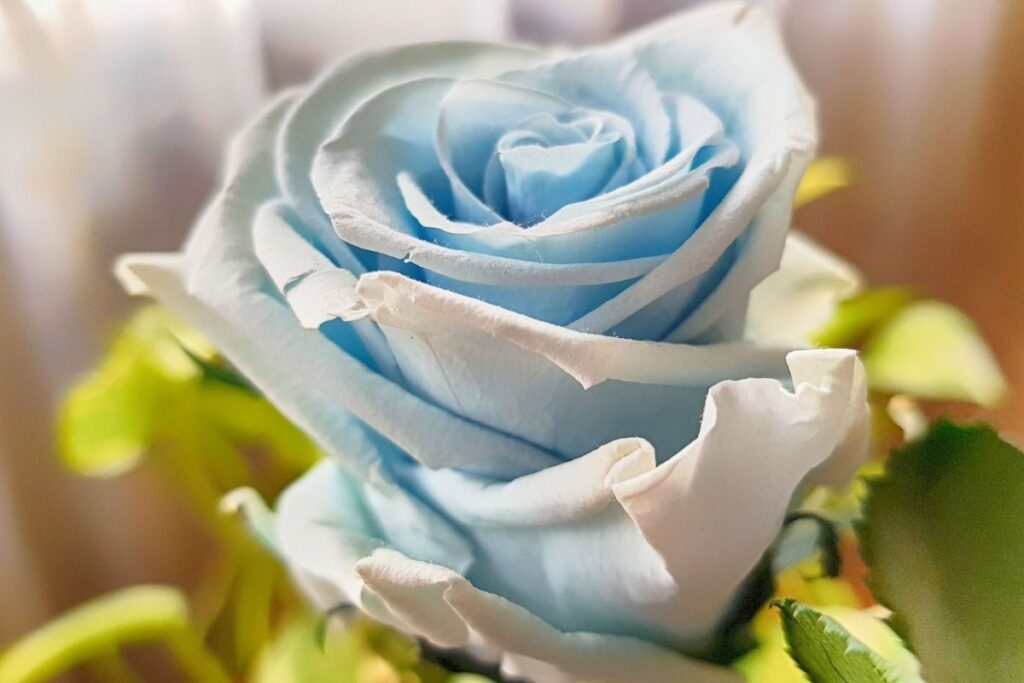
These roses are real roses, but they’ve been treated so as to preserve the color and texture. They’re stemless and specifically designed to be long-lasting. You can keep them as treasured possessions, evoking memories of special occasions.
8. Tahitian Brown Embers Tropical Hibiscus (Hibiscus rosa-sinensis)

This evergreen perennial shrub has a divine pale shade of tan brown with a deep red centre from which the intricate stamen emerges. It will definitely attract attention, as well as bees, butterflies and hummingbirds. A gorgeous addition to any surroundings.
9. Brownie Sweet Pea
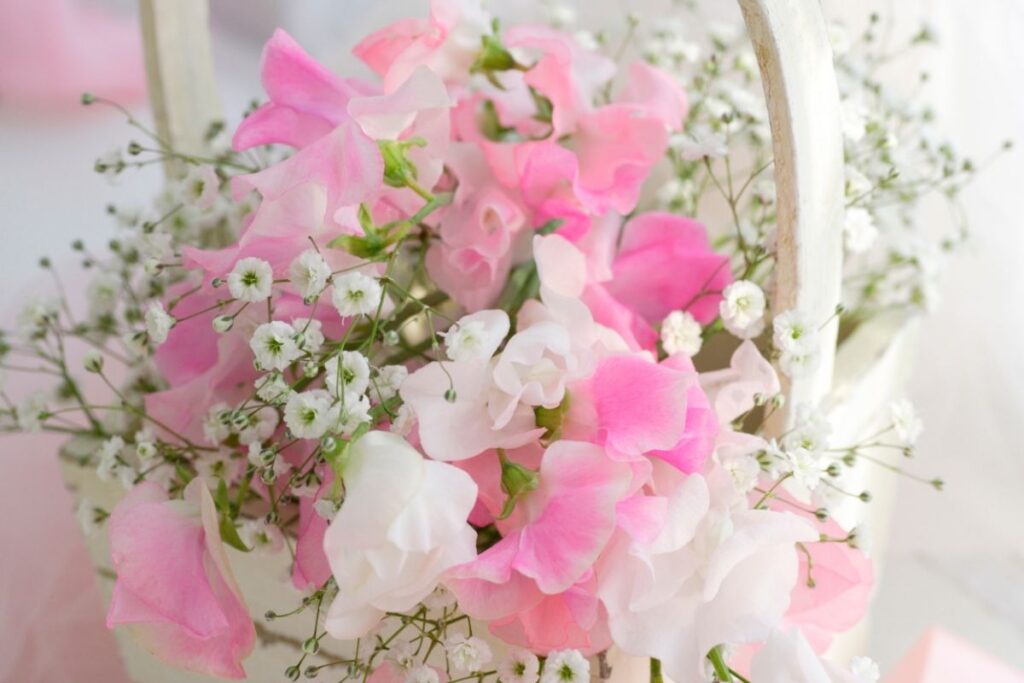
With a sweet fragrance and pretty blooms, the Brownie Sweet Pea is a delightful addition to gardens and flower arrangements. The blooms are fragile, so should not be handled too much. Said to symbolize ‘delicate pleasures’, these flowers add both fragrance and pleasure wherever they go!
RELATED: The Hosta With the Mosta: 9 Different Types Of Hostas
10. Tracy’s Orchid (Cymbidium Tracyanums)
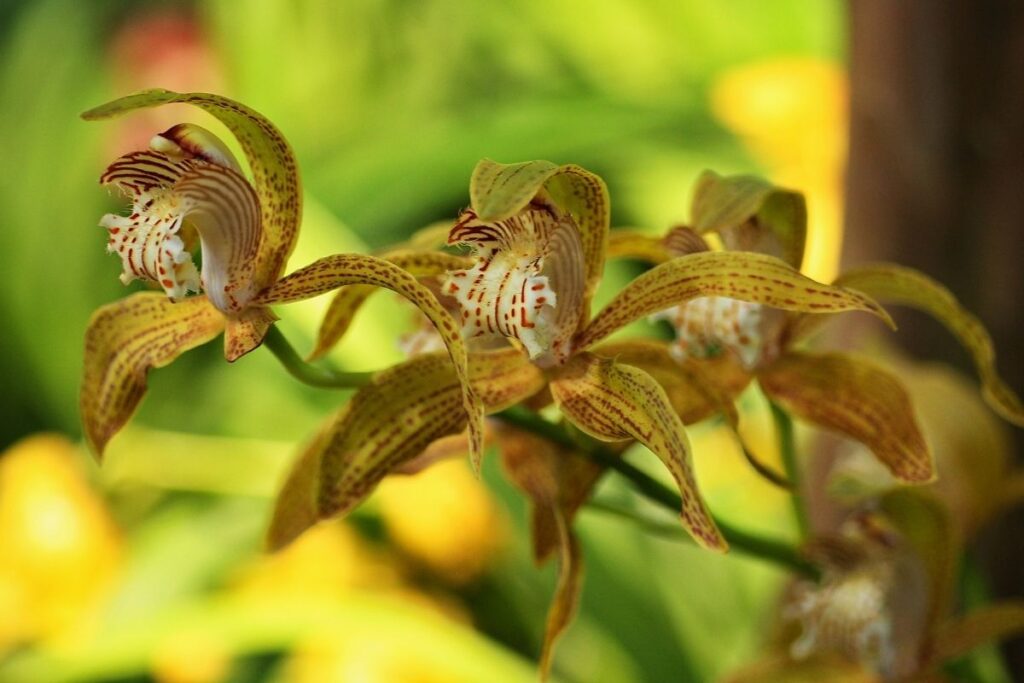
A Tibetan Orchid that’s cold-hardy and has blossoms of large beige flowers with brown and maroon veins. It brings with it the scent of strong cardamon. Great in gardens or greenhouses. These lovely plants grow wild in Tibet in evergreen mountain forests by tree trunks and at the base of damp rocks. Lucky Tibetans!
11. Golden Leaf Edged-Orchid (Cymbidium floribundum)

Hailing from south eastern China this dark tan Orchid is also known as the Golden-Edged Orchid or the Yellow Margin Orchid. It’s an evergreen plant that produces its gorgeous flowers in the early spring or late winter.
If grown outdoors, it releases a compound called 3-hydroxyoctanoic acid that attracts bees. Interestingly, the bees won’t attempt to pollinate the orchids until the orchids are optimally brown.
12. Iris-Like Orchid (Cymbidium iridioides)
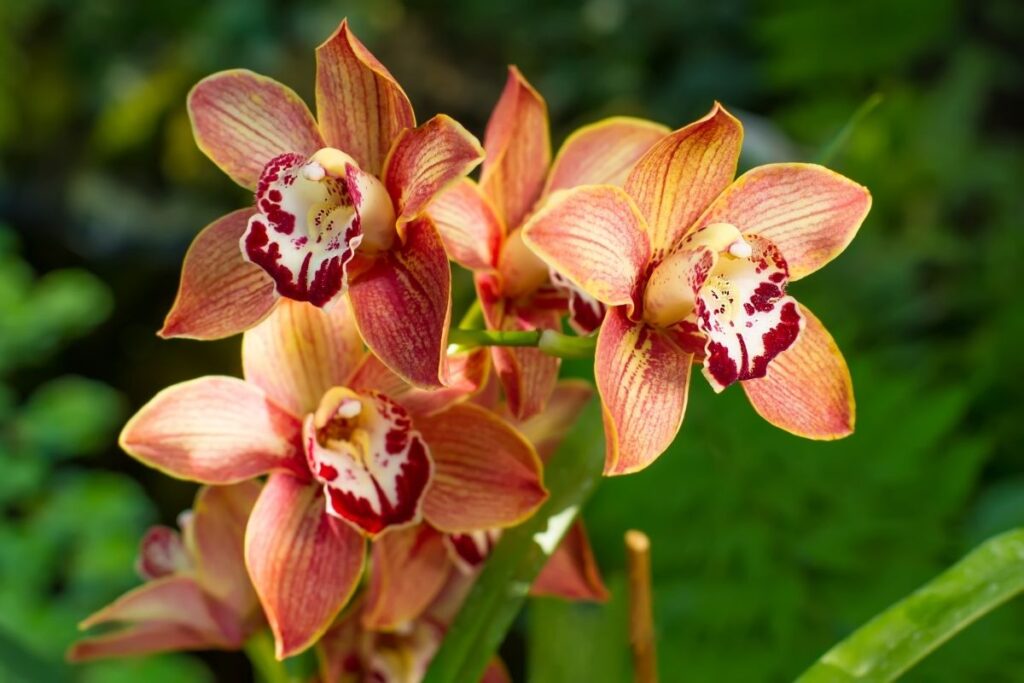
An intricate and very pretty Himalayan Orchid that combines brown with green, white, and violet. Native to eastern Nepal, this plant is edible, and has historically been an addition to a Himalayan curry stew known as olatshe or olachoto. It’s also a medicinal plant.
Its leaves can be turned into a paste that can be applied to open wounds to stop bleeding. Unfortunately for the plant, its usefulness to humans has made it a rarity. It’s called the Iris-Like Orchid because the flower blooms are similar to those of the Iris.
13. Dahlia Vintage Yellow-Brown (Dahlia Pinnata Cav.)
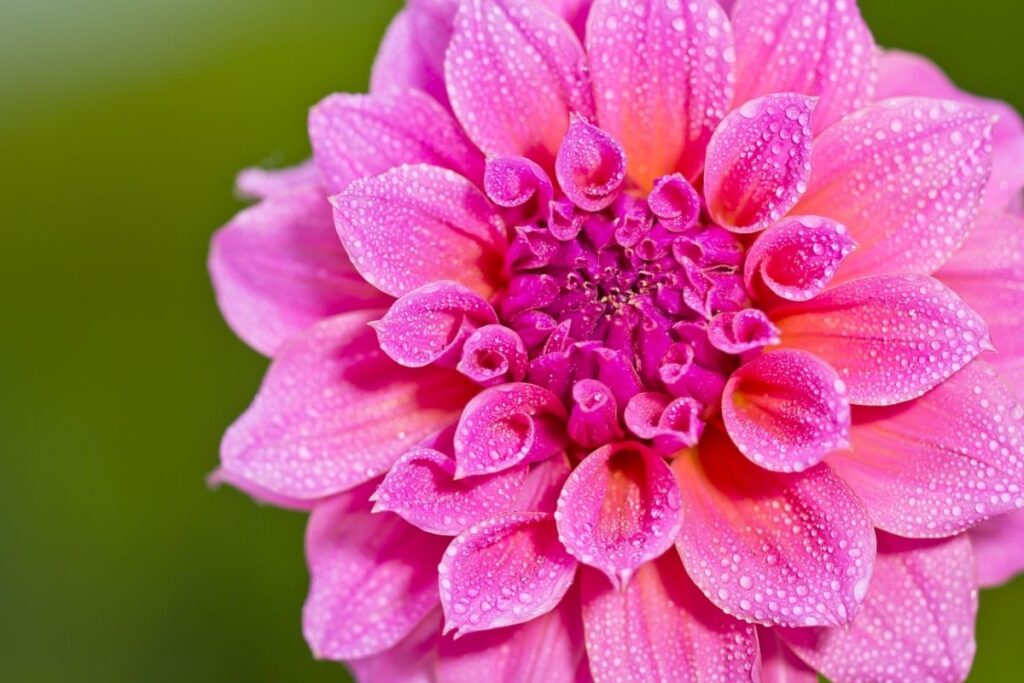
This is the national flower of Mexico and can be found in a wonderful variety of colors, including a golden brown. There are dahlias shaped like cacti, orchids, pompoms, and waterlilies; really a fascinating group of plants. There are 42 different dahlia species. Most, like this one, don’t have a fragrance but they are all very hardy herbaceous perennials.
14. Anthurium Cocoa Tropical Flower
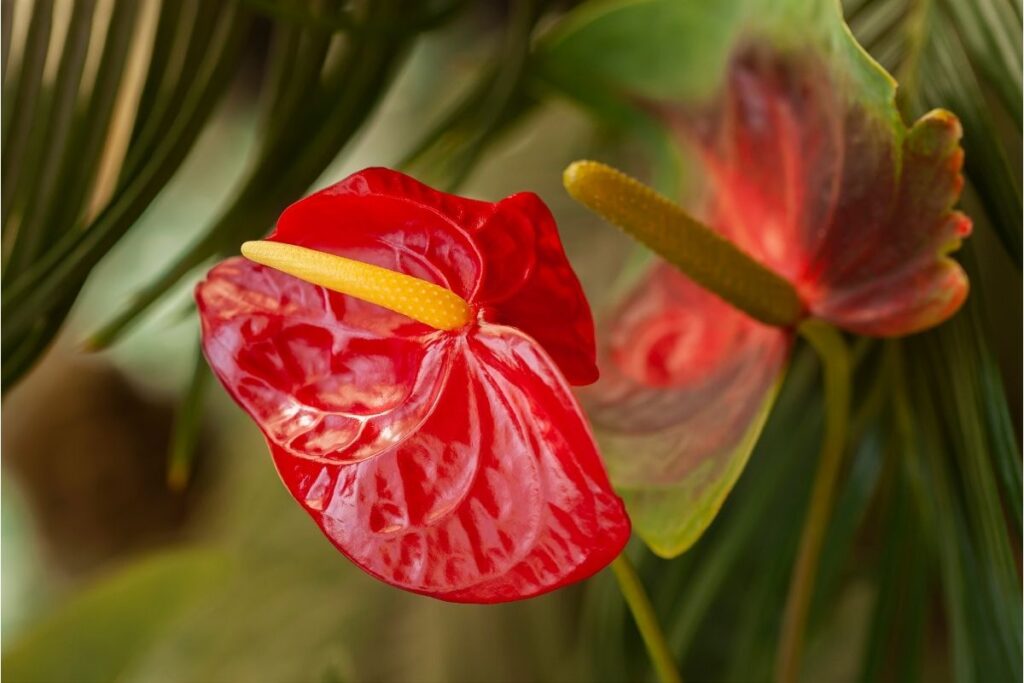
Anthurium Cocoa Tropical Flowers have leaf-like blooms in a sumptuous shade of cocoa. The waxy looking bloom, with its deep veins, adds texture and gloss to its surroundings and is definitely going to attract attention.
15. Multi-Colored Pansy (Viola Tricolor)
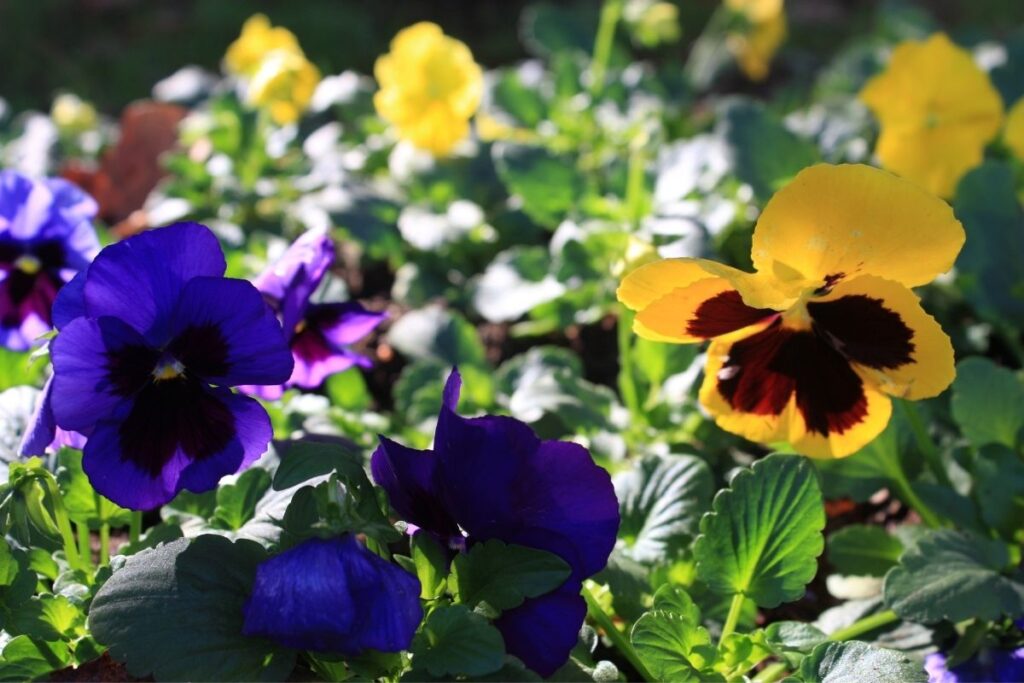
A North American, cold-loving annual, this pansy has darker tan tones alongside yellow and deep brown. You can find pansies in every color, including bi-color and tri-color pansies. These brown-toned pansies are an exceptional variety.
16. Tan Hua Flower (Epiphyllum oxypetalum)
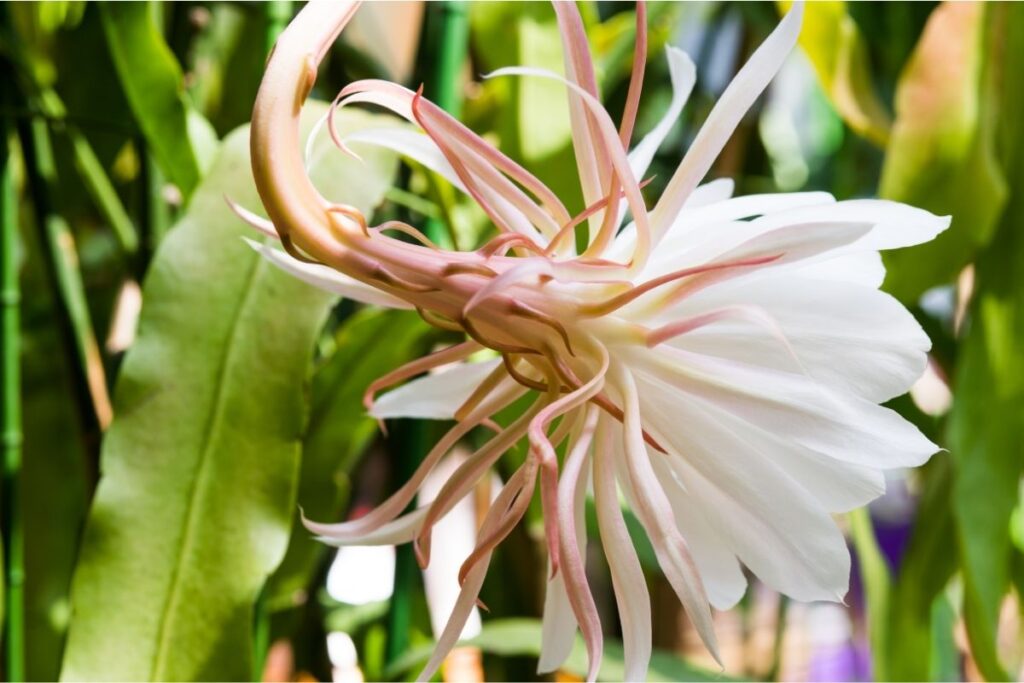
The fragrant Tan Hua flower is included in this article because of its name primarily, although it does have a pale hint of tan in its bloom. This intriguing plant blooms only once a year in the dark of night and then dies at sunrise.
The plant is native to Guatemala and Mexico, and was imported to China in the 1600s, where it more recently gained a great deal of popularity due to the programme ‘Crazy Rich Asians’. It’s also known as Orchid Cactus and Night-Blooming Cereus.
Like other night blooming plants, it’s called Queen of the Night by groups on social media that favor night bloomers and mark the arrival of the blooms with celebrations. In Asia, the arrival of the blooms is sacred, said to bring good luck and prosperity to those who witness it.
The beauty of the plant, its intriguing characteristics, and the fact it can be cultivated relatively easily, are reasons, says awkwardbotany.com, why it’s become so popular.
RELATED: Nature is Sweet As! 10 Different Types Of New Zealand Trees
17. Absalon Tulip (Tulipia)
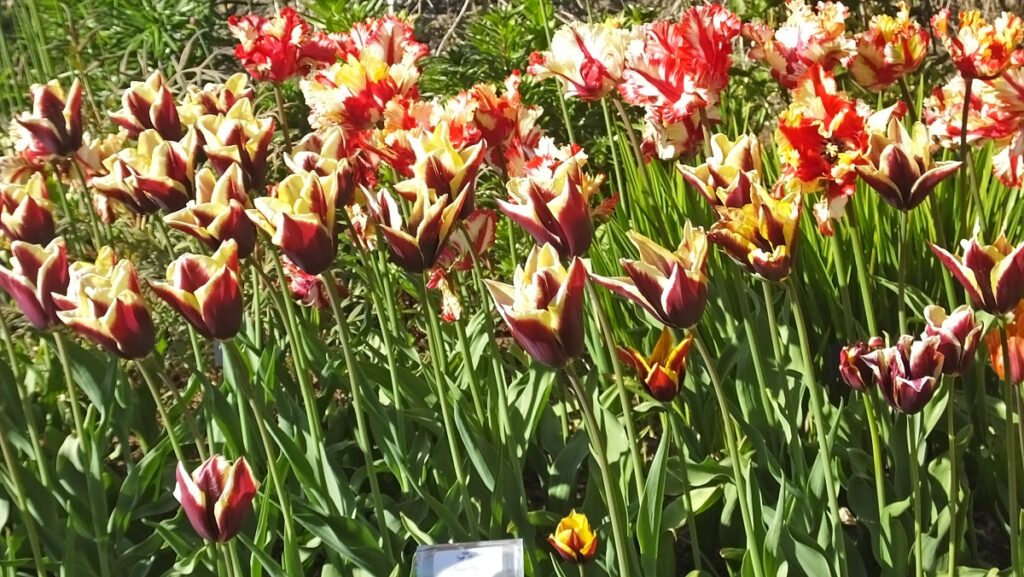
A North American Tulip, the late-blooming Absalon Tulip is one of 35 cultivars of tulips with brown tones.
18. Cattleya Angerei Orchid
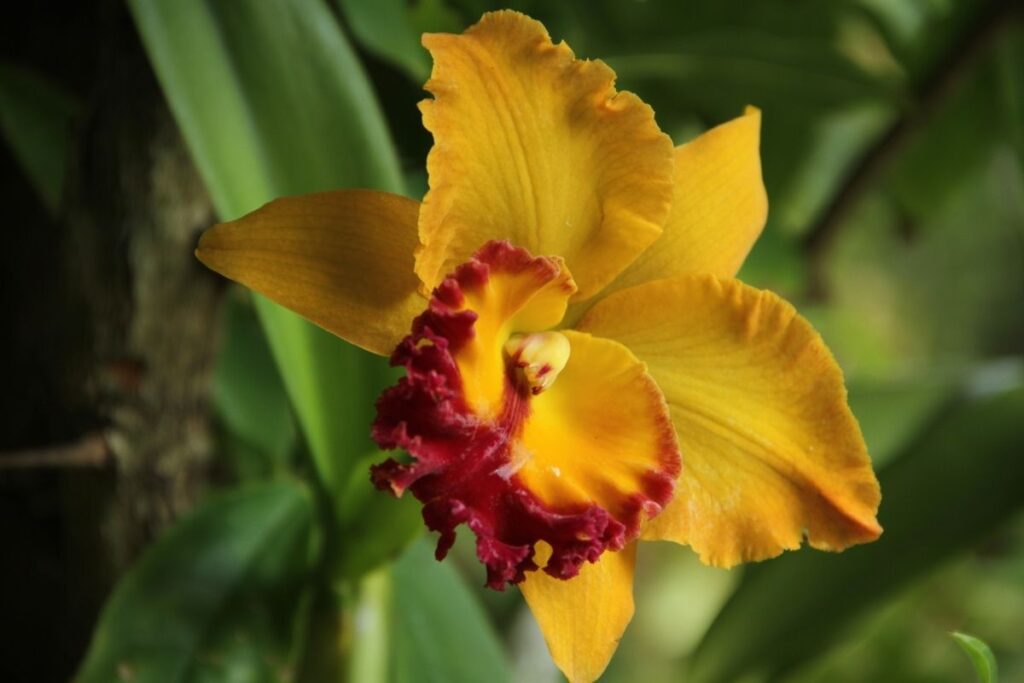
A more orange hued tan, Cattleya orchids hail from Central and South America. This orange-brown Orchid from Argentina offers its gorgeous display of five-petaled blooms only once; they tend not to rebloom from old canes.
They’re an epiphytic type of Orchid that grows from underground rhizomes. The leaves are long and oblong, with smooth margins and appear in sets of two at the base of the plant cane.
19. Scabiosa Pods

With the gentlest hues of pale tan in the outer petals and intricately pretty pale green centers with flower shaped stamens, this plant is divine. It’ll add a very unique touch to floral arrangements and garden settings.
20. French Truffle Brownie Tulip
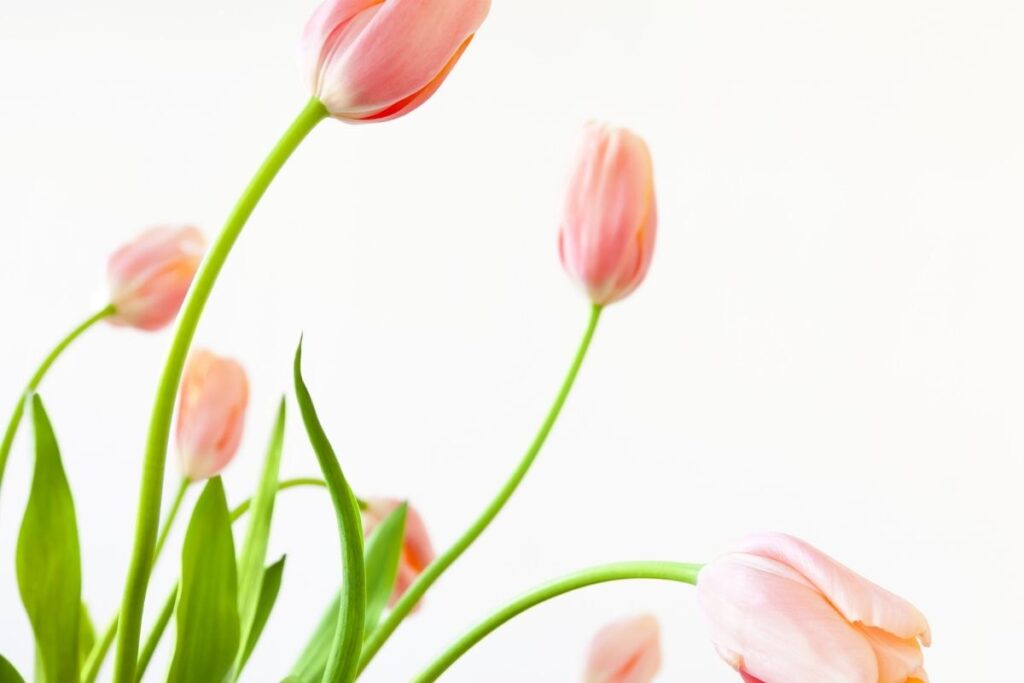
Elegant plants, with mauve brown blooms. The large, tight petals gradually open into a cup-shaped bloom. Really beautiful and rather classical.
21. Cattail
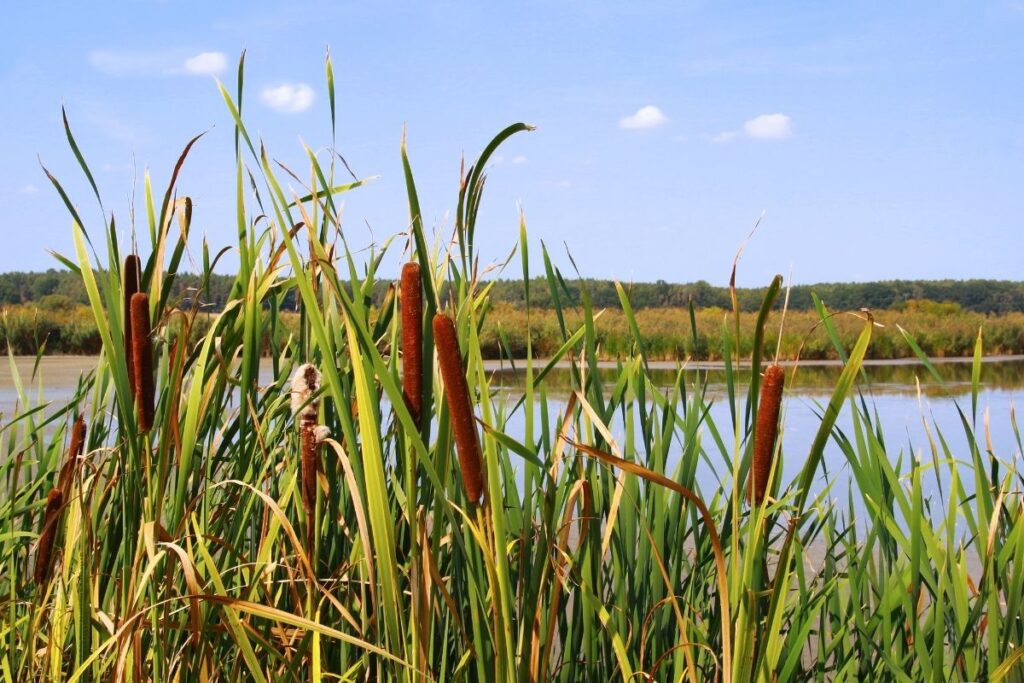
The Cattail has an interesting shape, texture and color and works magnificently in floral arrangements as a filler. It cannot help but add verve because the plant is so streamlined and unusual.
22. Brown Terracotta Lisianthus
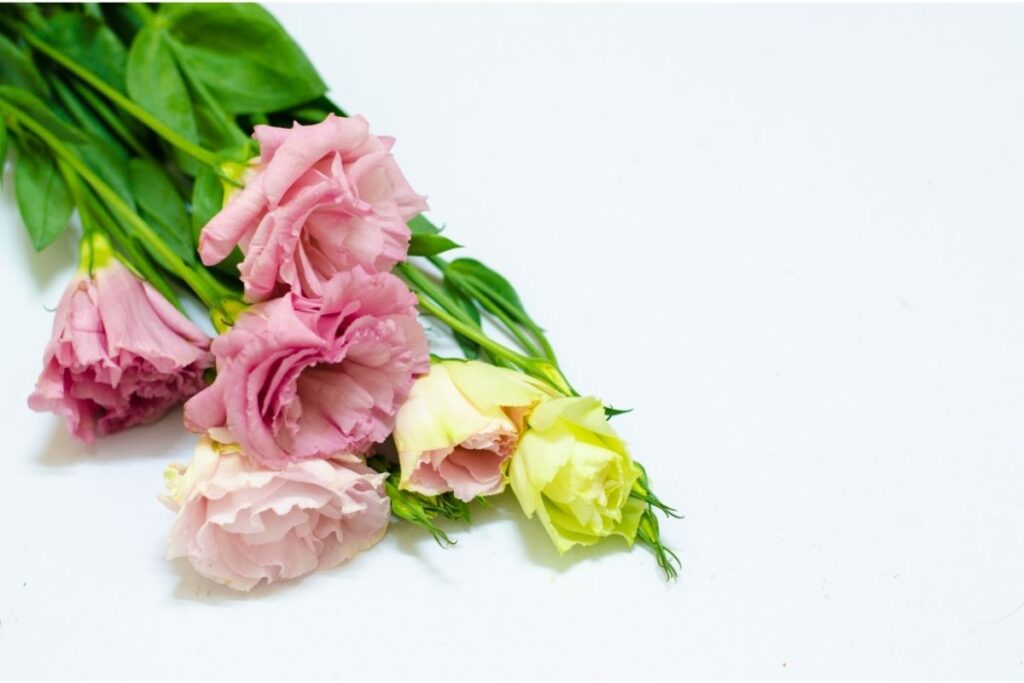
Locally grown brown Terracotta Lisianthus is a purplish tan with a lovely ruffled appearance and rich central area in which fluffy yellow and pale green add to the color accentuation.
23. Amber Brown Mini Cymbidium Orchids

Amber Brown is a blend of yellow, orange and burgundy and the result fits within the tan category sufficiently to include it here. The striking color, and the ineffably beautiful structure of the Orchid, make for a pleasing display. Mini Cymbidium Orchids have eight to eleven of these wonderful blooms per stem.
Conclusion
Not necessarily the first color that springs to mind when you imagine a country garden, flowered arbor, or house brimming in indoor plant life, tan is an acquired taste. Once acquired, though, the range and variety of tan hued plants, and their magnificent blooms, will captivate you.
Whether you want a pale tan that is almost like a pale frothy milk chocolate cream or a deeper tan that more resembles earthy brown, there’s a shade that will suit. Irises in tan hues stand out and many Orchids, in particular, come in tan varieties.







